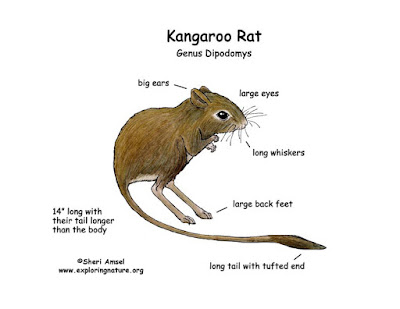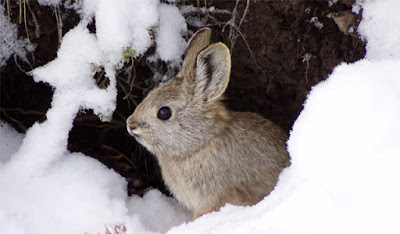Ocelot Blog by Sarah Bennett
Description and Ecology
Ocelots (Leopardus pardalis) look similar to an average housecat. A fully grown ocelot stands 16 to 20 inches tall, measures about 2 to 3 feet long, and weighs 17 to 33 pounds. Its tail is between 12 and 20 inches. An ocelot’s fur is usually reddish tan with black splotches. The fur is white on the chest and stomach, as well as under the tail. This coloring helps the ocelot blend in with its habitat. Because the ocelot is a predator, its eyes are on the front of its face.Territorial and solitary, ocelots spend most of the day resting out of sight in brush or among tree vines or roots. They hunt mostly at night. To find prey, they roam throughout their territory and then spend up to an hour at a time motionless in a single spot waiting to strike. The diet of ocelots consists mostly of small mammals such as rabbits and mice, but they also eat lizards, frogs, and even birds. An interesting fact about ocelots is that they are strong swimmers. This allows them to catch fish and crabs during rainy seasons.
Ocelots are currently found in parts of Texas, Mexico, Central America, Ecuador, and Argentina. Ocelots also wander from Mexico into Arizona, but this is rare. This Recovery Plan focuses on ocelots in the U.S. and Mexico. Ocelots used to be found in central Arizona, but because of habitat destruction and predator control operations, they have been pushed farther south. Fossils suggest that ocelots even lived as far into the U.S. as Ohio and Florida, but there is very little data. Ocelots can live in various habitats. They have been known to live in grasslands, thornscrub, and tropical forests.
Listing Date and Type
Ocelots were listed as endangered on March 28, 1972. They are listed under the Endangered Species Act in the U.S. and under law in Mexico. In Arizona and Texas, ocelots are listed as endangered by the Arizona Game and Fish Department and the Texas Parks and Wildlife Department.
Ocelots are endangered because their main habitats (grasslands, thornscrub, and tropical forests) were destroyed by humans in order to plant vegetables, cotton, and citrus plants. In Texas, 95 percent of the thornscrub habitat was converted to agriculture, rangelands, and urban development. There are currently only 50,000 acres of bushland in southeastern Texas. As of 2015, 53 ocelots remained in this area. Of the 50,000 acres, 30,000 are privately owned. The other 20,000 acres are federally protected on the Laguna Atascosa National Wildlife Refuge. A limited habitat for the population is the reason for the ocelot’s extreme endangerment. Separation of the ocelots in Texas from the ocelots in Mexico caused inbreeding issues. In addition to the major threat of habitat destruction, commercial sales also contribute to the ocelot’s endangered status. Their coats sell for 400,000 dollars in Europe. Because of the Convention on International Trade of Endangered Species of Wild Flora and Fauna (CITES), however, the harvest and export of ocelots has declined.
Description of Recovery Plan
 The strategy for recovery involves six Recovery Actions. The first two actions are to assess, protect, and enhance ocelot populations and habitat in the U.S. and Mexico and to minimize the effects of human population growth and development on ocelot survival. Efforts must also be taken to improve the ocelots’ genetic fitness and health. The fourth recovery action assures long-term success through partnerships, incentives, community involvement, application of regulations, and public education and outreach. As new information becomes available, adaptive management will be put into practice to monitor recovery, and the U.S. Fish and Wildlife Service will revise tasks with implementation team subgroups. The sixth action requires support for efforts to ascertain the status and conserve the populations of ocelots south of Tamaulipas and Sonora in Mexico.
The strategy for recovery involves six Recovery Actions. The first two actions are to assess, protect, and enhance ocelot populations and habitat in the U.S. and Mexico and to minimize the effects of human population growth and development on ocelot survival. Efforts must also be taken to improve the ocelots’ genetic fitness and health. The fourth recovery action assures long-term success through partnerships, incentives, community involvement, application of regulations, and public education and outreach. As new information becomes available, adaptive management will be put into practice to monitor recovery, and the U.S. Fish and Wildlife Service will revise tasks with implementation team subgroups. The sixth action requires support for efforts to ascertain the status and conserve the populations of ocelots south of Tamaulipas and Sonora in Mexico.The ultimate goal is to remove the ocelot completely from endangered lists, but the immediate goal is to downgrade the ocelot’s status from endangered to threatened. For the ocelot to be classified as threatened, three criteria must be met. First, the ocelot needs to be classified on the International Union for Conservation of Nature’s Red List as “Least Concern” for more than five years. Habitat loss, habitat fragmentation, and poaching cannot be such a big threat that the ocelot is still in danger of extinction. Secondly, there must be more than 200 ocelots in Texas and 1,000 ocelots in Tamaulipas, Mexico. This population must also last for at least five years. The movement of ocelots to facilitate genetic variability is allowed. This can simulate natural dispersal and recruitment. Finally, in the area from Arizona to Sonora, Mexico, there must be at least 1,000 ocelots for more than five years.
What can you do?
 There are multiple steps that you can take to help these endangered animals. You can adopt an ocelot or another animal at the Defenders of Wildlife website. You can also take action by sending messages to government leaders. It is also helpful to stay informed and speak up for wildlife whenever you can.
There are multiple steps that you can take to help these endangered animals. You can adopt an ocelot or another animal at the Defenders of Wildlife website. You can also take action by sending messages to government leaders. It is also helpful to stay informed and speak up for wildlife whenever you can.Resources
Recovery Plan:
Ocelot Profile (U.S. Fish and Wildlife Service):
U.S. Fish and Wildlife Service Federal Register:
Adopt an ocelot:
Take action:
Become a wildlife advocate:
Stay informed:
Pictures:
Videos:










I really liked your blog. You touched on all the required areas. I thought the videos and all the links you included were nice, and the pictures you selected were really cute. -Karah Bengs
ReplyDeleteThis sentence that you had in the opening section was very interesting to me, "To find prey, they roam throughout their territory and then spend up to an hour at a time motionless in a single spot waiting to strike." They are clearly a very smart and innovative species, acquiring the ability to also swim which is unique from most cat species. It is incredibly sad that their fur was one of the reasons why they became endangered. Alternative solutions such as faux fur should really be embraced as we have the tools and means to create duplicate products without harming the well-being of another species. Similar to in class lecture how rhino horns are being poached and hold a high demand even though advancements in technology have allowed us to create an artificial product that is identical to the ivory, some individuals still want the real thing. Even though CITES created a regulation/ban against ocelot fur, it still makes me wonder if there is a black-market out there.
ReplyDelete-Sarah Bach
I loved reading this blog, since Ocelots are truly fascinating animals. Salvador Dali actually kept one as a pet, despite their temperamental nature. Learning that they were primarily threatened by deforestation due to agriculture and sought for their fur was eye opening and unfortunate. I liked the links and videos that you included in your blog, it certainly added to it. Good job on your blog, I enjoyed it. -Lucas Bartell
ReplyDeleteYour blog was very interesting and easy to follow. The ocelot was listed as a competitor for the jaguarundi which I wrote my blog on, so it was very informative to see how the ocelot is also being threatened. -Haley Baquian
ReplyDelete